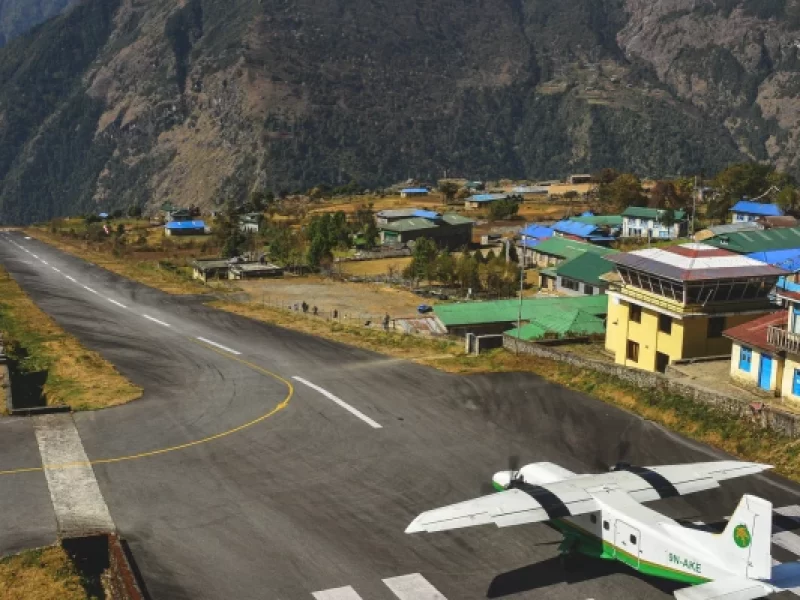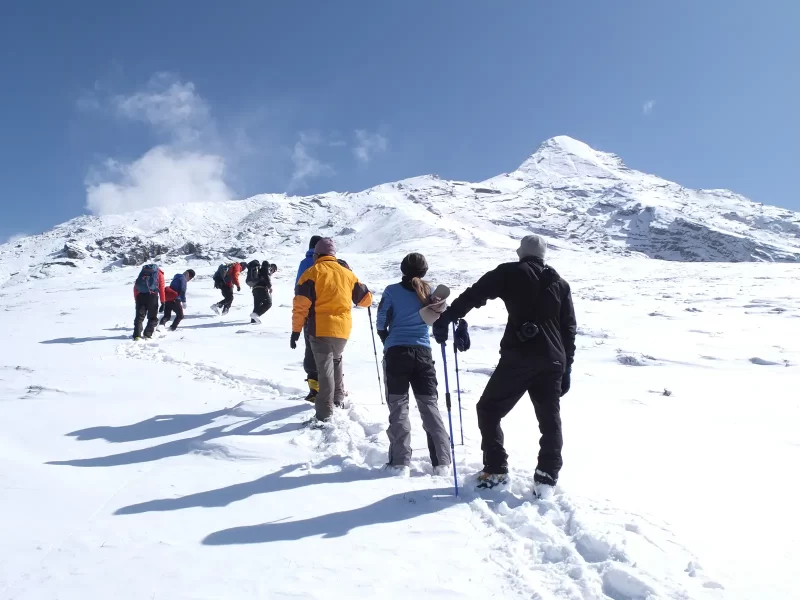Nepal, a landlocked country in South Asia, is known for its rich cultural heritage, stunning landscapes, and towering Himalayan peaks. With a population of around 30 million, Nepal is ethnically diverse and home to numerous sacred sites. Check out more about the Travel Guide for Foreigners and begin your adventures.
The official language is Nepali, and the country’s economy is primarily based on agriculture and tourism. Nepal is a popular destination for trekking, mountaineering, and cultural tourism, with UNESCO World Heritage Sites like Kathmandu Valley’s historic temples and palaces.
The country also boasts eight of the world’s 14 highest peaks, including Mount Everest. Nepali culture is characterized by festivals, including Dashain and Tihar. Transportation infrastructure includes domestic airports, roads, and buses.
Cultural etiquette includes respect for elders and traditional customs. Nepal is a federal democratic republic with a multi-party political system but faces challenges such as poverty, infrastructure development, and environmental conservation.
Why Do People Love Nepal?
Nepal is a popular destination for adventurers, nature enthusiasts, and cultural explorers due to its combination of natural beauty, cultural richness, and a spirit of adventure. The country boasts the Himalayan beauty of Mount Everest and other peaks, as well as scenic landscapes and unique cultures in the Annapurna and Langtang regions.
Trekking and hiking routes offer diverse experiences, while cultural encounters and historical sites like the birthplace of Lord Buddha are also worth exploring. Adventure activities include white-water rafting, paragliding, skydiving, and mountain biking.
National parks offer opportunities to spot wildlife and explore diverse ecosystems. Cultural diversity is evident in ethnic communities, and festivals and celebrations provide opportunities to engage in meditation and yoga.
Nepal offers budget-friendly accommodations, warm hospitality, and eco-tourism initiatives to preserve nature and culture. The country also offers photography opportunities, stunning sunrises and sunsets, volunteering opportunities, and the resilience of its people post-earthquake. Let’s follow the travel guide for more information and the exciting adventure everyone is waiting for.
How to get to Nepal?
People from all over the world come to visit Nepal. Nepal depends on tourism. Many people choose Nepal as their holiday destination due to many physical features The weather conditions are very moderate.
People can travel to Nepal by air and land transportation.
Flights to Nepal
Tribhuvan International Airport (TIA) is the only international airport in Nepal, serving as the primary gateway for travelers entering the country. Named after King Tribhuvan, it has a single domestic and international terminal, handling flights to and from other countries and managing domestic flights within Nepal.
TIA is served by various international airlines, including Qatar Airways, Turkish Airlines, Emirates, and Air India. The airport offers multiple check-in counters, immigration and customs procedures, baggage claim areas, currency exchange services, ATMs, duty-free shops, restaurants, cafes, and lounges.
Transportation options include taxis, car rentals, public buses, and microbuses. TIA also offers a Visa on Arrival service for eligible travelers. The airport adheres to international security standards, provides free Wi-Fi and internet access, and provides real-time flight information.

Land entry
Traveling by land into Nepal involves crossing the country’s borders with neighboring countries, primarily India and China. To cross the border, choose a suitable border crossing based on your starting point in India and your destination in Nepal.
Obtain the necessary documents, such as a valid passport and a Nepal visa. Travel options include regular bus services or private vehicles. Cross the border, complete exit formalities with Indian immigration, and complete entry formalities with Nepalese immigration.
For China, cross the Kerung-Rasuwa border and complete immigration formalities. Travel options include overland tours, private vehicles, or Chinese immigration. Be aware of permits, regulations, and local currency. Consult local authorities or travel agencies for accurate information.
Best time to visit Nepal
Nepal’s seasons are spring, summer (monsoon), autumn, and winter. Spring is the best time to visit Nepal due to its warm weather, clear skies, and vibrant landscapes. Activities include trekking, cultural tours, and wildlife spotting in national parks.
Summer brings heavy rainfall and high humidity, but it can also lead to landslides and road closures. Autumn offers mild temperatures and clear skies, perfect for trekking and cultural tours.
Winter brings cooler temperatures, especially in higher elevations, but can be colder in the evenings and mornings. Popular activities include short treks, wildlife spotting, and cultural tours.
It’s important to consider festivals, trekking regions, and weather variability when planning outdoor activities. In summary, the best time to visit Nepal for trekking and general tourism is during spring and autumn. Better get a travel guide to make trekking fun and exciting when the weather is pleasant and clear.
Obtain travel documents
To plan a trip to Nepal, it is essential to obtain the necessary travel documents. These include a valid passport, valid visa, special permits, health documents, travel authorization, and COVID-19 considerations.
Ensure your passport is valid for at least six months beyond your departure date, and renew it if it is nearing expiration. Visit your country’s official passport office or website to understand the renewal process and complete the application form.
If you are eligible for a visa, check eligibility on arrival and submit the required documents. Before traveling, apply at the Nepalese embassy or consulate and pay the visa fee in cash. If trekking permits are required, obtain them through authorized agencies or the Department of Immigration in Kathmandu.
Obtain an international certificate of vaccination and purchase comprehensive travel insurance. Stay informed about any additional travel authorizations or permits required based on your nationality, and stay updated on COVID-19-related requirements.
Prepare for Altitude Sickness
Altitude sickness, also known as acute mountain sickness (AMS), occurs when individuals ascend to high altitudes too quickly, causing the body to lack time to acclimatize. Common symptoms include headaches, nausea, dizziness, fatigue, shortness of breath, and difficulty sleeping.
Severe conditions like high-altitude pulmonary edema (HAPE) and high-altitude cerebral edema (HACE) can be medical emergencies. To manage altitude sickness, it is essential to consult with healthcare professionals, plan a gradual ascent, and include rest days during the trek or ascent.
Hydration and nutrition are crucial, along with a balanced diet and avoiding alcohol and caffeine. Medications, such as acetazolamide (Diamox), can help prevent and treat AMS. Symptoms can be recognized and reported promptly.
If symptoms develop, descend to lower altitudes immediately. Using portable oxygen is recommended, and local remedies like coca tea or garlic soup may alleviate symptoms. Emergency evacuation plans, acclimatization tours, high-altitude training, and weather-appropriate gear are also essential. Continuous monitoring is crucial for safety and well-being.
Booking accommodations
Booking accommodations is a crucial part of trip planning, ensuring a comfortable and enjoyable stay. To book accommodations, research your destination, duration, and preferences, and set a budget for expenses.
Use reputable online booking platforms like Booking.com, Airbnb, Expedia, Agoda, or Hotels.com, read user reviews, and look for special deals. Choose from various accommodation types, such as hotels, guesthouses, and vacation rentals.
Filter options based on preferences, and select dates, room types, and payment information. Confirm your reservation and itinerary, contact the accommodation directly if you have special requests, join hotel loyalty programs, explore local options, and read reviews and recommendations.
Choose accommodations with flexible cancellation policies, provide arrival details, and be aware of local cultural etiquette. Consider COVID-19 health and safety measures when booking accommodations. A well-planned accommodation can significantly enhance your overall travel experience.
 Pack Accordingly
Pack Accordingly
Packing for different climates and activities is crucial for a comfortable and enjoyable trip. To pack, research the destination, understand its climate, and be aware of seasonal changes. Essential clothing includes lightweight, breathable clothing for warm and tropical climates, as well as layers for variable climates.
Warm clothing includes thermal layers, a winter jacket, and insulated clothing for cold climates. Rain gear includes a waterproof jacket, umbrella, and footwear for rainy weather. Footwear includes comfortable walking shoes, sandals or flip-flops for warmer climates, and sturdy hiking boots for hiking or trekking.
Accessories include sunglasses, sunscreen, hats, swimwear, gloves, and scarves for colder climates. Adaptive clothing includes quick-dry and moisture-wicking fabrics for activities.
Activity-specific gear includes hiking gear, water activities, camping gear, chargers, travel adapters, toiletries, medications, travel documents, a reusable water bottle, and a travel pillow.
Backpack or suitcase choices, an emergency kit, and respect for local customs and dress codes are also essential. Creating a checklist and packing cubes helps organize and optimize space in luggage.
Transportation within Nepal
Local transportation in Nepal varies based on the region and urbanization level. Common modes include local buses, taxis, rickshaws, cycle rickshaws, motorbikes, scooters, cycle hire, domestic flights, Jeeps, four-wheel drives, boats, ferries, electric bicycles, and walking.
Local buses connect major cities, towns, and rural areas, while taxis provide a convenient and comfortable option. Rickshaws and cycle rickshaws are common in urban areas for short-distance travel but are limited to flat or slightly inclined terrain.
Motorbikes and scooters are available for rent in tourist areas, but traffic congestion can affect schedules. Cycle hire is popular for exploring scenic areas and rural landscapes, but is limited to areas with suitable cycling infrastructure.
Domestic flights are time-efficient and offer spectacular aerial views, but they may have a limited baggage allowance. Jeeps and four-wheel drives are common in rural and mountainous regions, but they are uncomfortable on long journeys and have limited seating capacity.
Boats and ferries are common in certain regions but are limited to specific water routes and not available in mountainous regions. Electric bicycles and e-scooters are becoming increasingly popular for short-distance travel, but are limited to areas with e-bike infrastructure.
Required permits for trekking
Common permits include the Trekkers’ Information Management System (TIMS) Card, National Park/Conservation Area Permits, Restricted Area Permits, Local Municipality Entry Permits, Annapurna Conservation Area Project Permit, and Gaurishankar Conservation Area Permit (GCAP).
Trekking in Nepal requires various permits to ensure safety, preserve the environment, and support local communities. These permits help track trekkers and provide important information in case of emergencies.
They can be obtained through the Nepal Tourism Board or authorized agencies. Restricted Area Permits control tourism and preserve the unique culture and environment of restricted regions.
Local Municipality Entry Permits regulate and monitor the flow of trekkers in specific regions. It is essential to research the specific trekking region and obtain the necessary permits before starting your trek. Trekking with a licensed guide and a registered trekking agency can help ensure a safer and more enjoyable experience.
Conclusion
In conclusion, this travel guide provides comprehensive information on traveling to Nepal, including transportation options, visa requirements, and essential documents. It offers insights into the country’s diverse landscapes, rich cultural heritage, and Himalayan peaks. The guide emphasizes the importance of understanding the best times to visit, altitude preparation and obtaining necessary documents. The guide aims to create a memorable and enriching journey, combining exploration with the serenity of the Himalayan landscapes.
FAQs
1. What is the best time to visit Nepal?
The best time to visit Nepal is during the pre-monsoon (spring) and post-monsoon (autumn) seasons, typically from March to May and September to November. These periods offer pleasant weather and clear skies, ideal for trekking and exploring.
2. What are the major international airports in Nepal?
The main international airport in Nepal is Tribhuvan International Airport (TIA) in Kathmandu. Additionally, there are a few other airports that cater to international flights, such as Gautam Buddha International Airport in Lumbini and Pokhara International Airport.
3. What are the popular trekking destinations in Nepal?
Nepal offers a plethora of trekking destinations, including Everest Base Camp, Annapurna Circuit, Langtang Valley, Manaslu Circuit, and many more. Each trek presents unique landscapes, cultural experiences, and challenges.
4. Is Nepal safe for solo travelers?
Nepal is generally considered safe for solo travelers. However, like any destination, it’s important to stay vigilant, be aware of your surroundings, and follow local guidelines for safety.
5. What are the must-visit cultural sites in Nepal?
Some must-visit cultural sites in Nepal include Swayambhunath (Monkey Temple), Boudhanath Stupa, Pashupatinath Temple, and the historic cities of Bhaktapur, Patan, and Kathmandu in the Kathmandu Valley.

Comment (0)